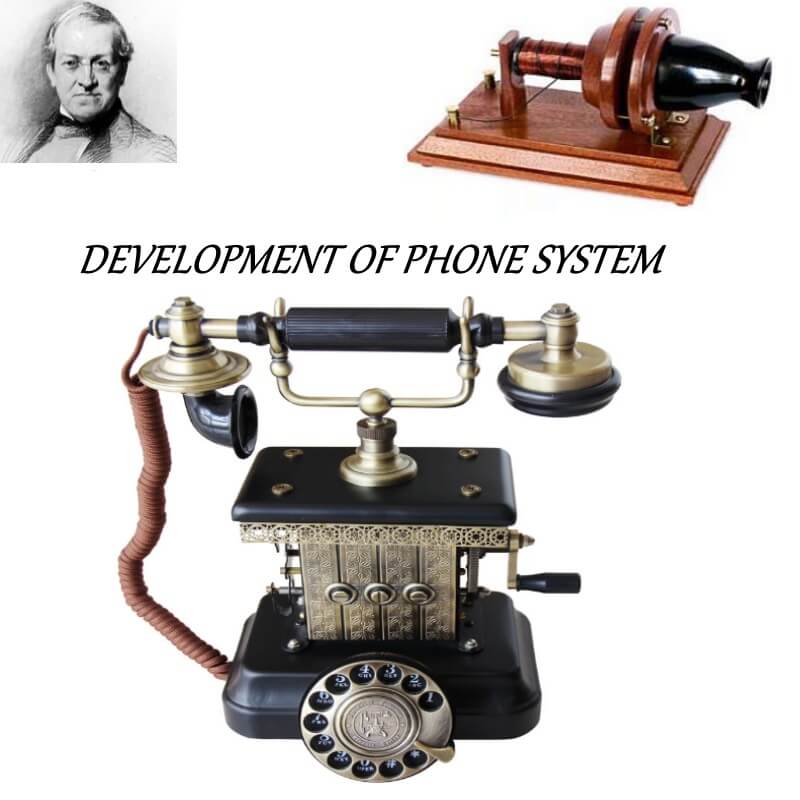So how did contemporary phone systems evolve?
Back in the 1826 Sir Charles Wheatstone coined the name – microphone. But it was not until experiments with changing the conductivity of water that the first practical mouthpiece was produced. With the gramophone already having been conceived it was comparatively easy to produce an ear sized speaker – the earpiece – and so the telephone handset was originated. Emile Berliner improved on this and in 1876 The Bell Telephone Company acquired his patent. Then in 1878 the carbon transducer was designed by David Edward Hughes.
It was in 1876, when Alexander-Graham-Bell demonstrated his remodeling of the electric telegraph, that it was possible to transmit speech over five miles of specially laid wiring.
That was how it came to pass. As voice networking matured the exchange equipment used 48 volts pulses to route the calls – Pulse Dialing. Ten equated to 0, and one to a 1. That is when we had Rotary Dials; but youngsters won’t have memories of those!
DTMF (Dual Tone Multi-Frequency) was talked of by AT&T in 1960. This “touch tone” signalling system (SS7) was introduced into America’s network back in 1963. The signals are audible and there are two tones whose frequencies are readily detectable. This made electronic addressing much simpler and did away with all the mechanical switching gear.
The dawn of semi-conductors in the 1960s and 1970s regenerated telephony. Private Branch Exchanges (PBX) were replacing the old manual (PMBX) machines where ladies sat in front of plug boards patching callers through to the preferred secretaries. Then we saw the acronym PABX – where the A stands for Automatic. These pabxs were huge cabinets taking up whole rooms – racks of electronics requiring kilowatts of power.
For small firms Key-systems were developed – initially they had electrical “cross-point” matrixes – soon to be supersede by Time Division Multiplexing.
Voice Mail was dreadfully expensive in the 1980s, but today it’s yours for as little as £150 – that’s for all your workers!
Today’s Phone Systems are probably a factor of 100 smaller than those of the 70’s.
The telling development of recent times has been the Internet. Telephony and computing have amalgamated. It’s now all IP traffic and we will see this in our home within a few years (SIP). The other sobriquet for this is Voice-over-IP (Skype was the leader in the home marketplace).
With wireless telephone communications we have seen another leap forward. GSM, WiFi, DECT and BlueTooth have reshaped our access to information – just where will it all end? “Beam Me Up Scottie!”




0 Comments